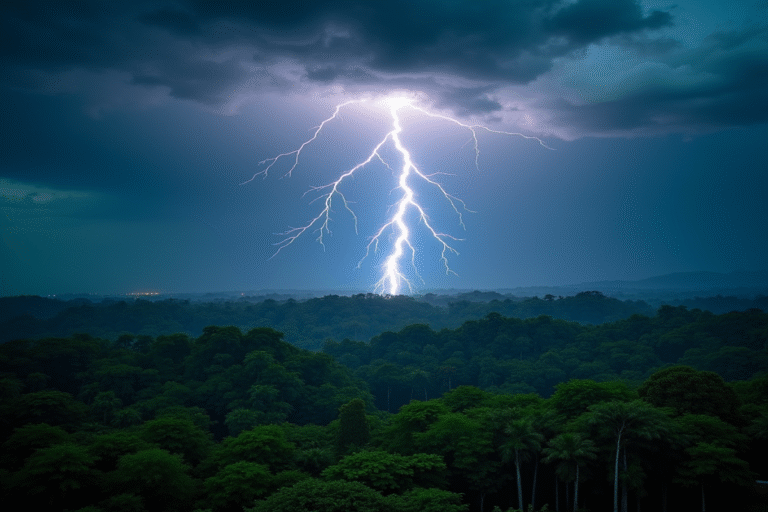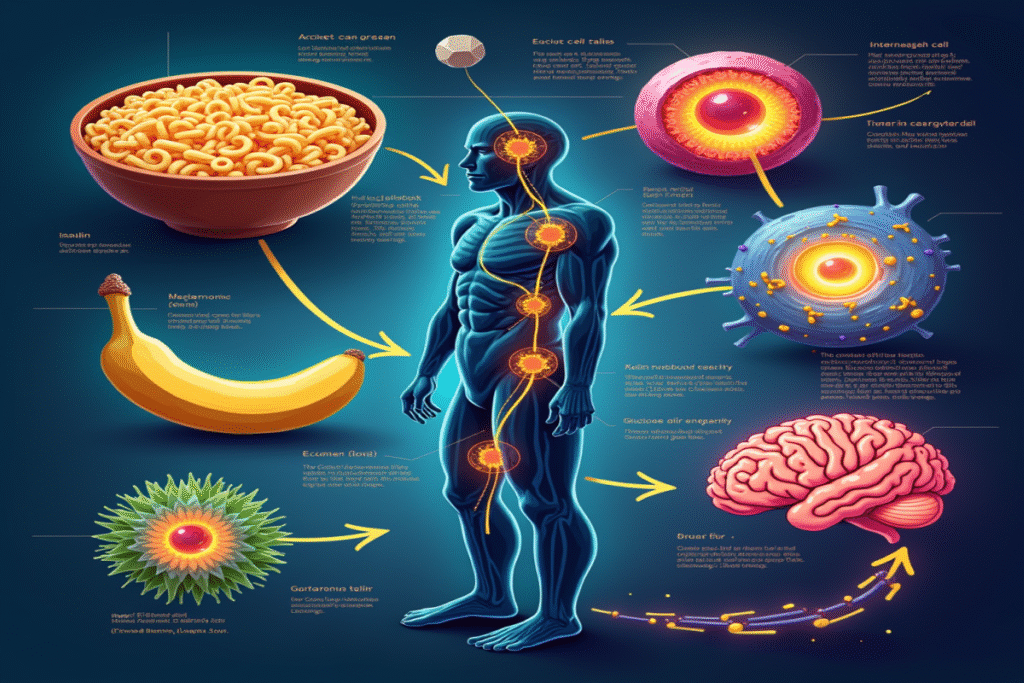Lightning—that spectacular atmospheric phenomenon that lights up the sky—is far more than just nature’s light show. It’s also one of Earth’s most powerful natural fertilizers. When those brilliant electrical discharges flash across storm clouds, they perform an essential service for plant life below by helping transform unusable atmospheric nitrogen into vital plant nutrients.
The Atmospheric Chemistry of Lightning
Our atmosphere is about 78% nitrogen (N₂), but here’s the catch: most living organisms, including plants, cannot directly use this gaseous nitrogen. The bond between nitrogen atoms is extremely strong, requiring immense energy to break apart. Plants need nitrogen in “fixed” forms like nitrates (NO₃⁻) or ammonium (NH₄⁺) to build proteins, DNA, and chlorophyll.
When lightning strikes, it creates a superheated channel where temperatures can reach an astonishing 30,000°C (around five times hotter than the sun’s surface). This tremendous heat provides enough energy to break apart nitrogen molecules in the air. The freed nitrogen atoms combine with oxygen to form nitrogen oxides (NOₓ). These compounds dissolve in rainwater, creating nitric acid (HNO₃) that falls to Earth’s surface.
Once in the soil, chemical processes convert this nitric acid into nitrates that plant roots can easily absorb—delivering ready-to-use fertilizer directly from the sky.
Nature’s Massive Fertilizer Factory
The scale of this natural phenomenon is astonishing. With approximately 8 million lightning strikes hitting Earth every day, scientists estimate this process fixes about 5–20 million metric tons of nitrogen annually. Before humans invented industrial fertilizer production, lightning was one of Earth’s primary ways of converting atmospheric nitrogen into forms usable by plants.
Regions with frequent thunderstorms often show enhanced plant growth. Studies indicate that lightning can increase available soil nitrogen by up to 25% in affected areas. The Amazon rainforest, which experiences more lightning than almost anywhere else on Earth, likely benefits greatly from this natural fertilization process.
Beyond Just Nitrogen Benefits
The soil-enriching properties of lightning extend beyond nitrogen fixation:
- Phosphorus activation: Lightning’s electrical discharge can make soil phosphorus more soluble and available to plants.
- Microbe stimulation: The electromagnetic pulse from lightning may temporarily increase the activity of beneficial soil microorganisms.
- Ozone production: Lightning produces ozone (O₃) which, when it reaches the soil, can help break down organic matter into simpler nutrients.
Nature’s Process vs. Industrial Fertilizers
It’s remarkable how lightning accomplishes naturally what takes enormous industrial effort to replicate. The Haber-Bosch process, which artificially fixes nitrogen for fertilizer production, uses about 1–2% of the world’s total energy and relies heavily on fossil fuels. Meanwhile, lightning has been providing this ecological service for millions of years using only renewable energy from the sun, which drives our weather systems.
While industrial fertilizers often create environmental problems through runoff and overuse, lightning’s nitrogen contribution is distributed precisely where and when rain falls, allowing for more gradual absorption into ecosystems.
Climate Change and Nature’s Fertilizer
As our climate changes, scientists predict shifts in global lightning patterns. Some regions may see increases in lightning frequency, potentially boosting natural nitrogen fixation, while others might experience decreases. These changes could have important impacts on ecosystem productivity worldwide.
Researchers have even started experimenting with plasma technology that mimics lightning’s nitrogen-fixing capabilities, hoping to develop more sustainable fertilization methods inspired by nature’s elegant solution.
A Thunderous Conclusion
The next time dark clouds gather and lightning illuminates the sky, take a moment to appreciate the invisible alchemy occurring in that flash. Each bolt represents a burst of fertility raining down on our landscapes—a process that has nourished Earth’s ecosystems for countless millennia.
Even nature’s most powerful and seemingly destructive forces play vital roles in maintaining the balance that sustains life on our planet. Lightning doesn’t just electrify the sky—it helps feed the world.





